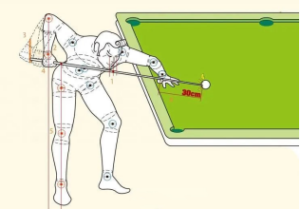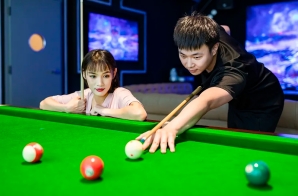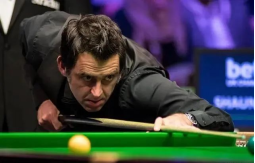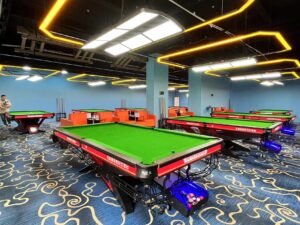In the sport of billiards, the way of holding the cue has a significant impact on the effect of the shot. There are many differences between holding the cue with the left hand and the right hand. The following is a detailed analysis for you to help improve your billiards skills.

Body Coordination and Dominant Hand
In the sport of billiards, body coordination is closely related to the choice of the dominant hand. For most people, the dominant hand has more advantages in terms of strength, flexibility, and control, so they usually hold the cue with their dominant hand. For example, right-handed people are used to using their right hands, and left-handed people are used to using their left hands. However, in some special cases, when the position of the cue ball or the obstacles on the table make it uncomfortable to shoot with the dominant hand, it is necessary to switch to the non-dominant hand. For example, when the cue ball is close to the left cushion, a right-handed person may have to switch to the left hand to hit the ball. For high-level players, in order to avoid mistakes caused by changing hands, they will train their non-dominant hand to approach the stability and accuracy of the dominant hand through training. It is not easy to reach such a level, and it requires long-term perseverance and targeted practice. For example, you can set some specific obstacle scenarios and force yourself to use the non-dominant hand to hit the ball, gradually getting used to and improving the reaction ability and shooting skills of the non-dominant hand. At the same time, by constantly adjusting and improving the training methods, find the most suitable way for yourself to improve the stability and accuracy of the non-dominant hand.

Differences in Shooting Posture
There are obvious differences in shooting posture between holding the cue with the right hand and the left hand. When holding the cue with the right hand, usually the left foot is in front and the right foot is behind, the body’s center of gravity is shifted to the left foot, and the right shoulder sinks naturally. When holding the cue with the left hand, it is the opposite, with the right foot in front and the left foot behind, the center of gravity is shifted to the right, and the left shoulder sinks. In addition, when changing hands to hit the ball, the position of the head and the angle of the line of sight need to be adjusted accordingly, which may affect the judgment of the shooting line. Therefore, whether shooting with the dominant hand or the non-dominant hand, it is necessary to get used to different postures and line-of-sight angles through repeated practice.
Moreover, when using the non-dominant hand as the support hand, the stability and comfort of the bridge may decrease. At this time, it is necessary to specifically strengthen the bridge technique, such as using an open bridge or a cushion bridge. Through continuous experimentation and practice, find the most suitable bridge method for yourself to improve the stability and accuracy of the shot.

Power Generation and Control
In terms of power generation and control, the dominant hand has a natural advantage. The dominant hand generates power more naturally, and the coordination of the wrist and arm is better when making a shot. It is easier to control the hitting force and the stroke techniques such as the follow shot and the draw shot. In contrast, when using the non-dominant hand initially, problems such as an unstraight shot and uneven power generation often occur. In order to improve this situation, simulated training, such as dry run practice, can be carried out to improve muscle memory and enhance the power generation and control ability of the non-dominant hand.
However, this requires patience and continuous practice. Every time you practice, focus on the standardization of the movement and the uniformity of power generation, and gradually form the correct muscle memory. As the number of practices increases, the power generation and control ability of the non-dominant hand will gradually improve, thus playing a better role in actual shooting.
Practical Suggestions
In the sport of billiards, in order to better utilize the advantages of holding the cue with the left and right hands, the following are some practical suggestions. First of all, the dominant hand should be given priority. Unless there is a situation where it is necessary to change hands, try to use the dominant hand to maintain the stability of the shot. Secondly, pay attention to the training of the non-dominant hand. You can practice the basic shots of the non-dominant hand separately, such as straight shots and stop shots, and improve the shooting ability of the non-dominant hand through repeated practice.
At the same time, you should also try different bridge methods according to the position of the shot with the non-dominant hand, such as the Chinese bridge and the cushion bridge, and find the most suitable bridge posture for yourself. In addition, through the training of body flexibility, such as stretching and posture adjustment, you can expand the shooting range of the dominant hand and reduce the frequency of changing hands. In short, the key is to find the balanced shooting rhythm of the left and right hands through repeated practice, so as to improve your billiards level. At the same time, you can find a good billiard table for practice. Spike Billiard Tables are sold directly by the original manufacturer, with guaranteed quality. There are no middlemen to make a profit, and the price is affordable. It goes directly from the factory to your hands, allowing you to enjoy high-quality products.

@spk.billiard
